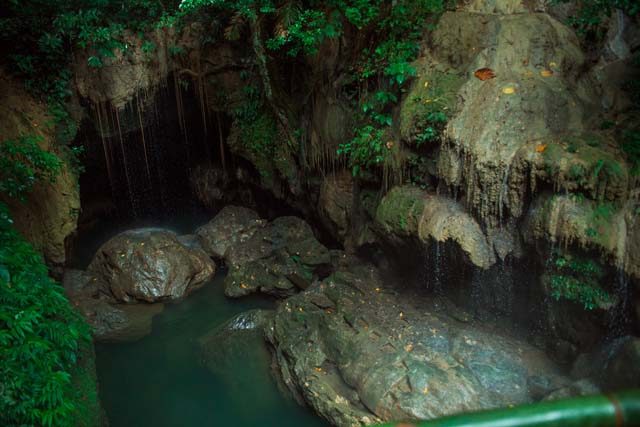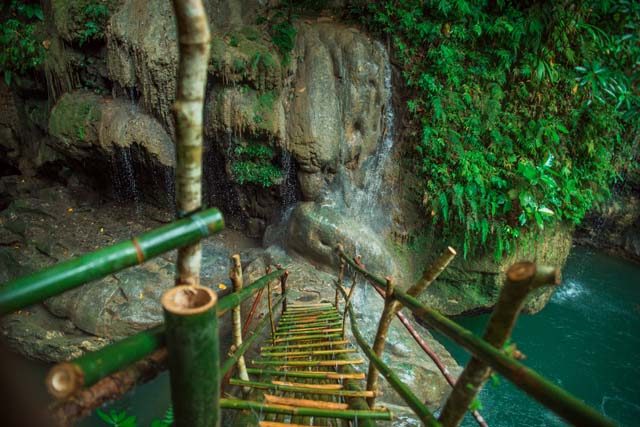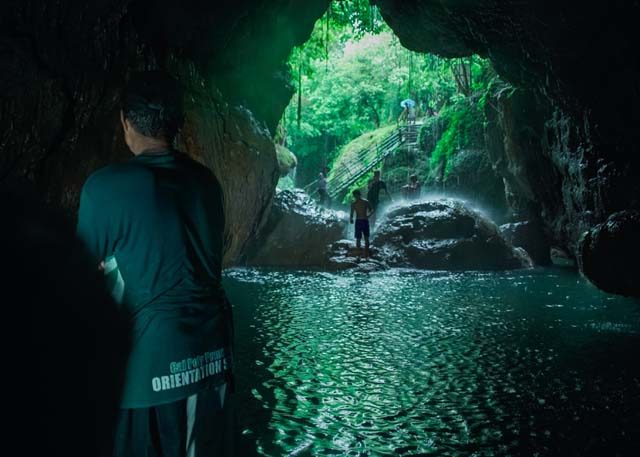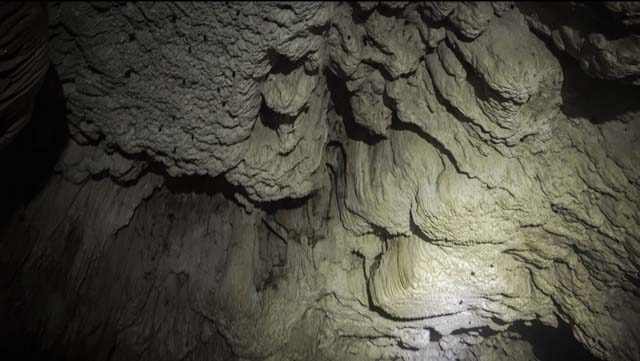SUMMARY
This is AI generated summarization, which may have errors. For context, always refer to the full article.

LEGAZPI CITY, Philippines – Before, Barangay Quitinday in Jovellar, Albay used to be an uncharted area to many – even to those who live in nearby towns and cities. In just a few years’ time, however, this changed, thanks to the community that worked together.
The link that binds them? Ecotourism.
The area used to be a stronghold of communist rebels. When their numbers dwindled, the local government used tourism to help the community rise up again.
The municipality is home to a hidden underground waterfall and river that has made Quitinday flourish and the community empowered.
It was only in 2016 when the Jovellar underground river slowly gained traction. Local and foreign tourists started coming in from different places to seek adventure in the area.
“Dati po, walang pumupunta ditong tourists. Noong na-discover po na maganda itong aming lugar, lalo na itong underground river, ‘yon po ang simula na dinarayo ang aming lugar,” said barangay Quitinday chairman Eddie Pedrajeta.
(Before, tourists do not come here. When they discovered that our place is beautiful, especially our underground river, tourists started coming.)

Bringing home a mother
How exactly did ecotourism help the community?
What the local government did was give jobs to the community, in which they take care of their natural resources and earn from it at the same time. The residents also went through capacity-buidling programs.
Their main selling point and tourist attraction is the underground river which residents describe as a unique one. Unlike other underground rivers in the Philippines, this one in Jovellar is immersive. People can take a dip and swim at the end of the 180-meter-long river.
Tourism officer and consultant Rome Candaza said this is the kind of tourism people are now looking for: It must be immersive and experiential.
“Experience po ang binibenta namin dito sa Jovellar (Experience is our selling point here in Jovellar),” Candaza said.
Single mother Annaliza Broqueza, who used to work in Manila to provide for her children, is one success story in the community. (READ: Jovellar’s river guide: How an ecotourism project brought a former maid home)
She used to work from one home to another to take care of other people’s children. But now that she earns better as a tour guide in the Jovellar underground river, Broqueza is finally home to take care of her own children.
“Wala po akong hiniliing talaga na makauwi sa lugar ko na kasama ko mga anak ko na may pinagkakakitaan,” she said.
(I have no other dream but to go home, find a job, and be with my children while still having a means of livelihood)

Empowering a community
In order to sustain the tourist attraction and minimize impact on the waterfall and river, tourists have to walk around 500 meters from the entrance and parking lot.
As of now, around 100,000 tourists have already visited the place.
“Malaki po ang naging impact nitong underground river sa amin. Dati po ay walang trabaho ang mga tao dito. Dati ang hanapbuhay nila ay nag ko-kopra, nag-kaingin,” Pedrajeta added.
(The underground river has a big impact on our lives. Before, people here do not have a source of living aside from gathering copra and kaingin.)
Today, residents earn P200 per hour, up from their previous earnings of P50 per day. Students also work as tour guides during weekends. This has helped families in a lot of ways.

“Unang-una po, dati po mga tambay lang sila. Ngayon, sila na po ‘yong mga araw-araw na nag a-assist dito sa underground. Sila po ang mga boatman. ‘yong iba po ay tour guide,” Eddie Pedrajeta said.
(Before, men do not have jobs. Now, they are the ones assisting tourists in the underground river as boatmen. The others work as tour guides.)
The community-based tourism project also gave birth to many other livelihoods like selling native products, like kakanin, and goods such as shirts and souvenir items.
Councilor Michael Anzano, a part of the tourism committe, said that the local government created ordinances to maintain the underground river clean and tourist-friendly.
“One of the ordinances that we crafted po is pinagbabawal po namin ‘yong vandalisms dito. And ‘yong pag co-collect po ng stalactites and stalagmites, as well as ‘yong pagtatapon ng mga basura sa river,” he said.
According to Anzano, they have a lot of future projects for the tourist attraction including building different infrastructure to accommodate more tourists.
They have gone a long way, but the local government of Quitinday is making sure that the community flourishes even more. – Rappler.com
Add a comment
How does this make you feel?
There are no comments yet. Add your comment to start the conversation.